Boatowner’s Mechanical and Electrical Manual: How to Maintain, Repair and Improve Your Boat’s Essential Systems
Wow. That’s a mouthful. And so pretty much everyone just refers to it as “Nigel” or “Calder.” Literally, I’ve never heard anyone refer to it by the title, or even “Mechanical and Electrical Manual.” In fact, if you called it that, I’m not sure anyone would know what book you were talking about.
Now, Nigel Calder has written at least seven other books for cruisers, but whenever anyone just says “have you checked Nigel?” (or sometimes, “what does Calder say?”), this is the one they’re talking about.
We had the second edition aboard Que Tal and used it extensively in troubleshooting various problems. We loved it and recommended it to many others.
In 2005, the third edition came out and it is now about 40% longer (800 pages), largely due to the greater complexity of newer boats and even older boats that have had major refits. In particular it deals with more complex electrical systems and charging arrangements and also talks in far more depth about things such as watermakers and bow thrusters.
I’ve been reading a pretty good chunk of the book over the last couple weeks as we plan some needed upgrades on the electrical system on Barefoot Gal. If I loved the second edition, I don’t know how to describe my feelings for the third. WOW!
UPDATE: In 2015, the fourth edition came out and Dave and I had the opportunity to see one of the first copies at the Annapolis Boat Show — it adds even more.
This is one of those books that almost every boat needs to have aboard, but I have to admit that I’m having a hard time figuring out just what to say about it. It covers:
- The entire electrical system including various battery types and a variety of charging options
- Marine electronics (including saving soaked equipment!)
- Diesel engines, transmissions, shafts and props
- Refrigeration and air conditioning
- Plumbing, including tanks, heads and the associated through-hulls
- Pumps and watermakers
- Steering, wind vanes and autopilots
- Stoves, heaters, water heaters
- Winches, windlasses and bow thrusters
- Standing rigging and roller reefing
Whew. And when I say covers, I mean it covers in detail. And not just in words, but with lots of diagrams, photos, troubleshooting charts and more.
One thing that I really like is that Calder does not use photos or drawing from just one manufacturer — which might not be yours. For example, in the diesel engine section on fuel pumps, he has drawings from Detroit Diesel, Caterpillar and Volvo. In another section, he had pictures from both Yanmar and Perkins. Over and over, we’ve found that even if he doesn’t show our exact model of something, he does have one that’s close enough for us to use (generally combined with our owner’s manual) to be able to follow what he’s talking about.
Dave and I are both pretty mechanical, and willing to work on various projects. We’ve found Calder to be a great reference. But we also know a number of cruisers who don’t consider themselves mechanically inclined, yet have found themselves needing to make repairs in out of the way locations. And they, too, have found Calder to be invaluable in giving them the confidence to first diagnose the problem, and then to fix it. And that may be the best part of owning this book — you can do a lot more than you think you can!
For example, early in our cruising it became apparent that something was haywire with the battery charging. This was a topic that neither Dave nor I felt remotely competent in, but it was clear that one of us was going to have to deal with. And so one afternoon, while Dave sailed the boat, I sat below with everything torn apart, reading Calder until I found symptoms that sounded like ours. I did the tests he described and concluded that our voltage regulator was bad. To be honest, I’d never heard of a voltage regulator before we’d bought the boat — and only heard about it then as we inventoried the spares.
And of course, our spare wasn’t identical to the one in use, so it wasn’t going to be a simple swap-out. No, I had to install a whole new wiring harness and everything. But — and this is big — after reading Calder, I understood what I needed to do. Between this book (second edition) and the installation instructions that came with the regulator, I had no problems other than those occasioned by working on a moving boat. I even understood what I was doing in programming the regulator correctly for our batteries (as opposed to a cookbook approach of “do this because I say to”).
My confidence soared with that one episode, and I imagine others have had the same experience. I can’t tell you how many times we pulled out “Nigel” to figure something out. More than one page was covered in grease stains.
The bottom line is that I highly recommend this book, whatever you want to call it (or even if you want to use the full title . . . ). Amazon pretty consistently has the best price, so that’s where I’m linking to. If you buy it elsewhere, make sure you get the fourth edition — it has a lot more info on some systems than the second edition:
It’s available both in hardcover and for Kindle and other electronic formats. I greatly prefer a hard copy of reference materials as I find it easier to flip through real pages to find what I want (I also don’t worry about what may be on my hands). It’s also much easier to to follow many of the tables and troubleshooting charts. So if you are undecided between a hard copy and electronic, that’s my two cents 🙂
A couple of weeks ago, I wrote about Don Casey’s Sailboat Maintenance Manual, and at that time, I was asked if I preferred it over this one. The short answer is No. Dave and I want both aboard (and several others, too).
In general, Casey deals with systems on a simpler level, and deals with far more systems. His book is often a great starting point, particularly when I don’t know a thing about a particular system. But when we need very specific information to deal with a problem we have — basically, something not working — we turn to Calder. In fact, we also have several other how-to books on board as sometimes one covers something that another doesn’t, or covers it in a way that makes more sense to us.

Carolyn Shearlock has lived aboard full-time for 17 years, splitting her time between a Tayana 37 monohull and a Gemini 105 catamaran. She’s cruised over 14,000 miles, from Pacific Mexico and Central America to Florida and the Bahamas, gaining firsthand experience with the joys and challenges of life on the water.
Through The Boat Galley, Carolyn has helped thousands of people explore, prepare for, and enjoy life afloat. She shares her expertise as an instructor at Cruisers University, in leading boating publications, and through her bestselling book, The Boat Galley Cookbook. She is passionate about helping others embark on their liveaboard journey—making life on the water simpler, safer, and more enjoyable.
Your VHF can do so much! Learn how to use ALL its features for just $39:
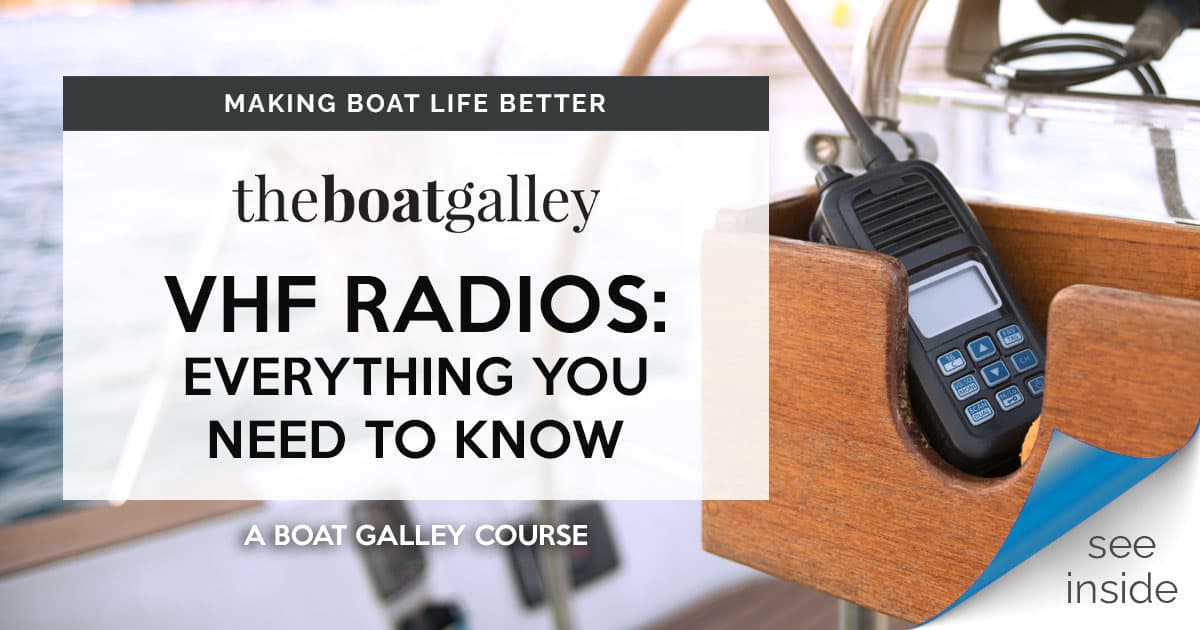
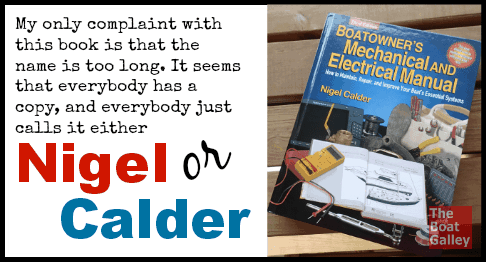
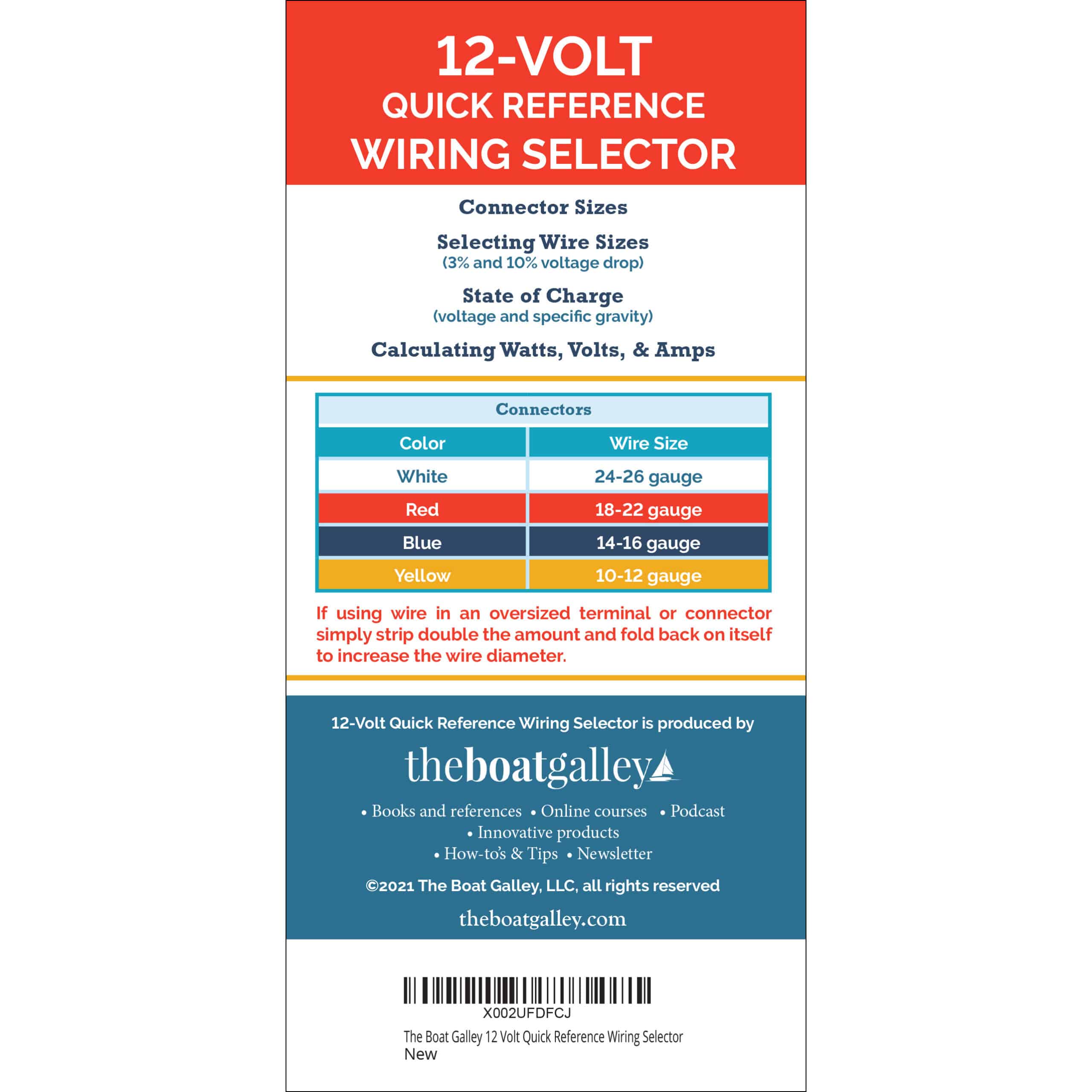
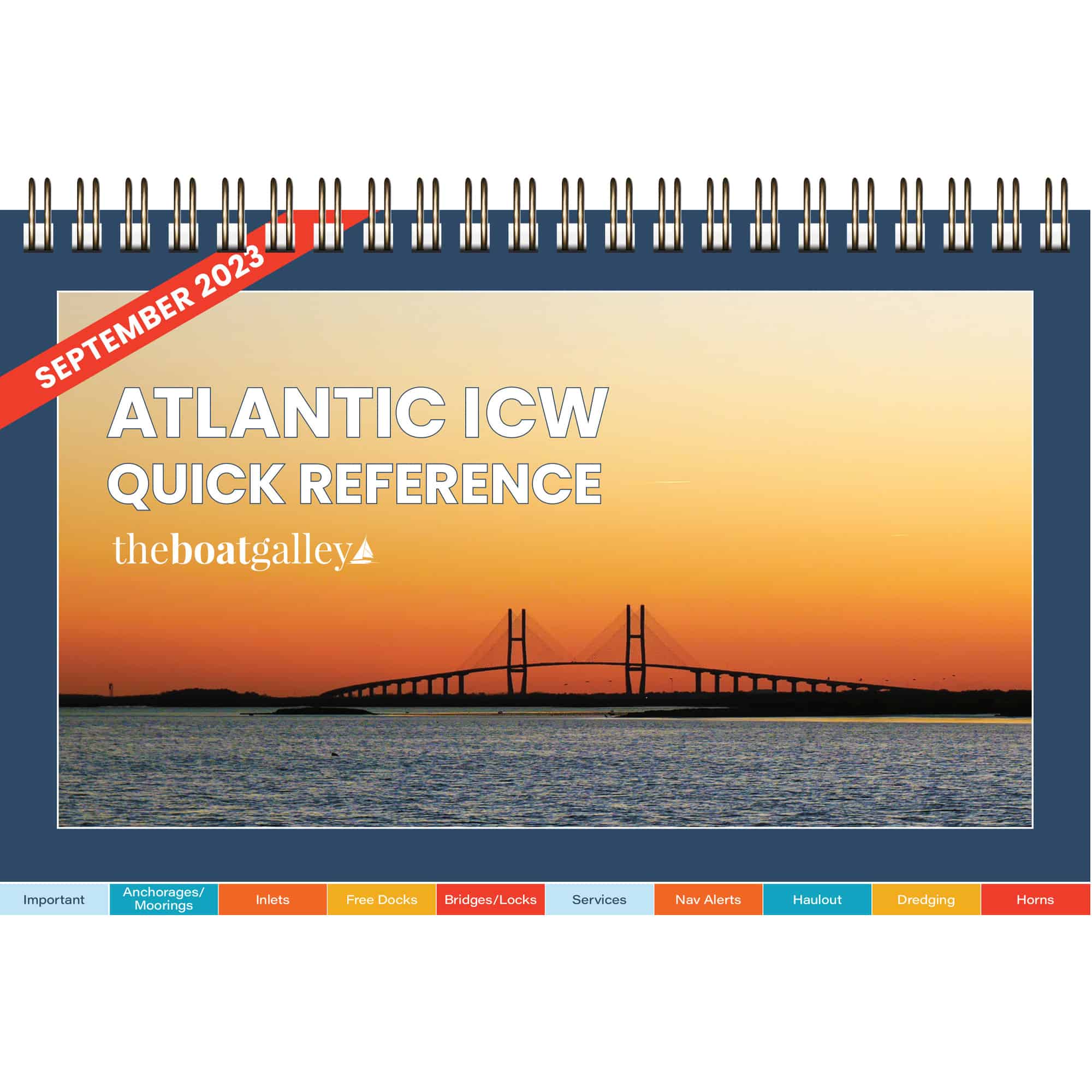

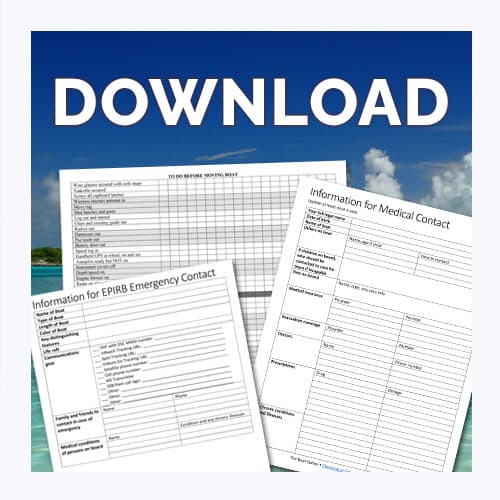


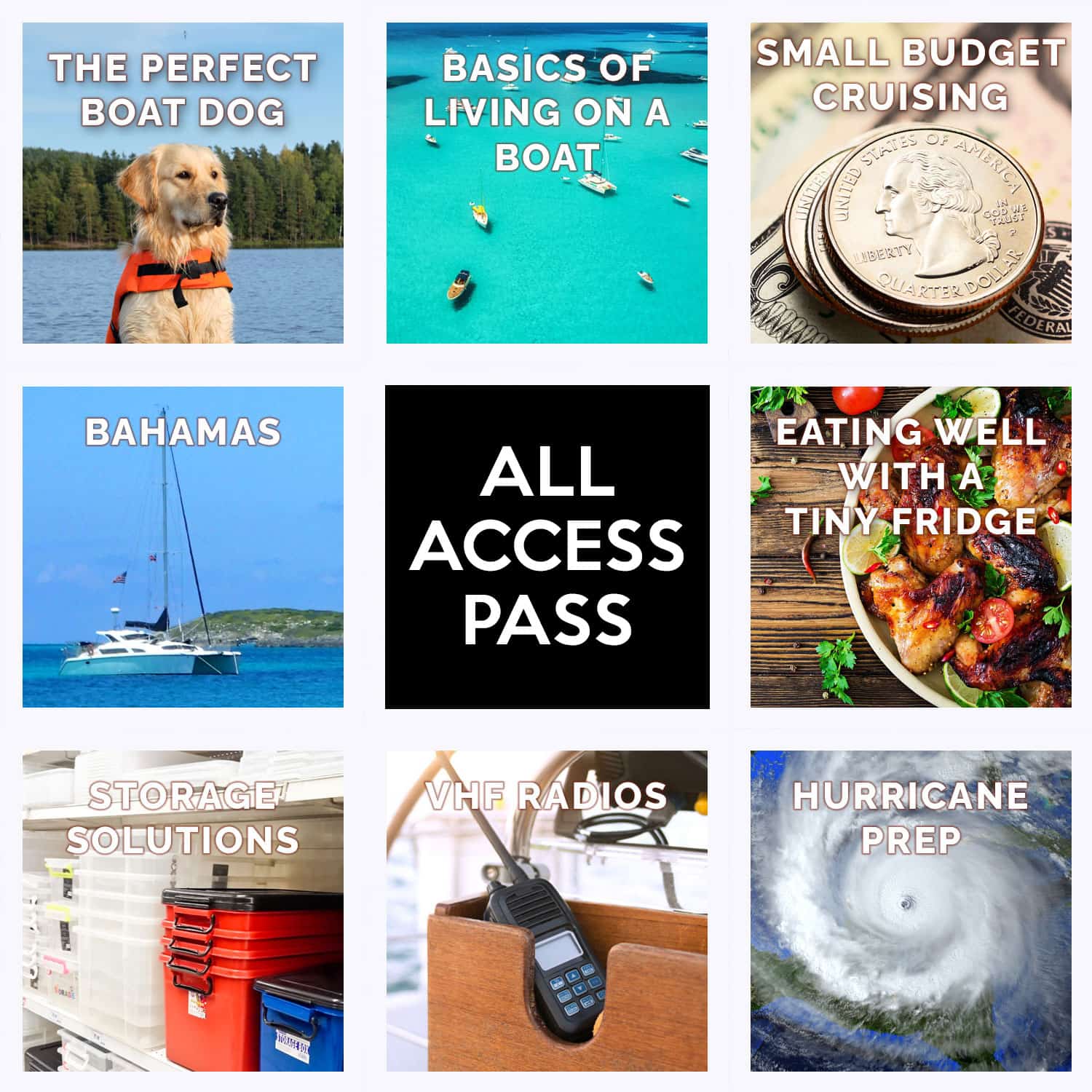
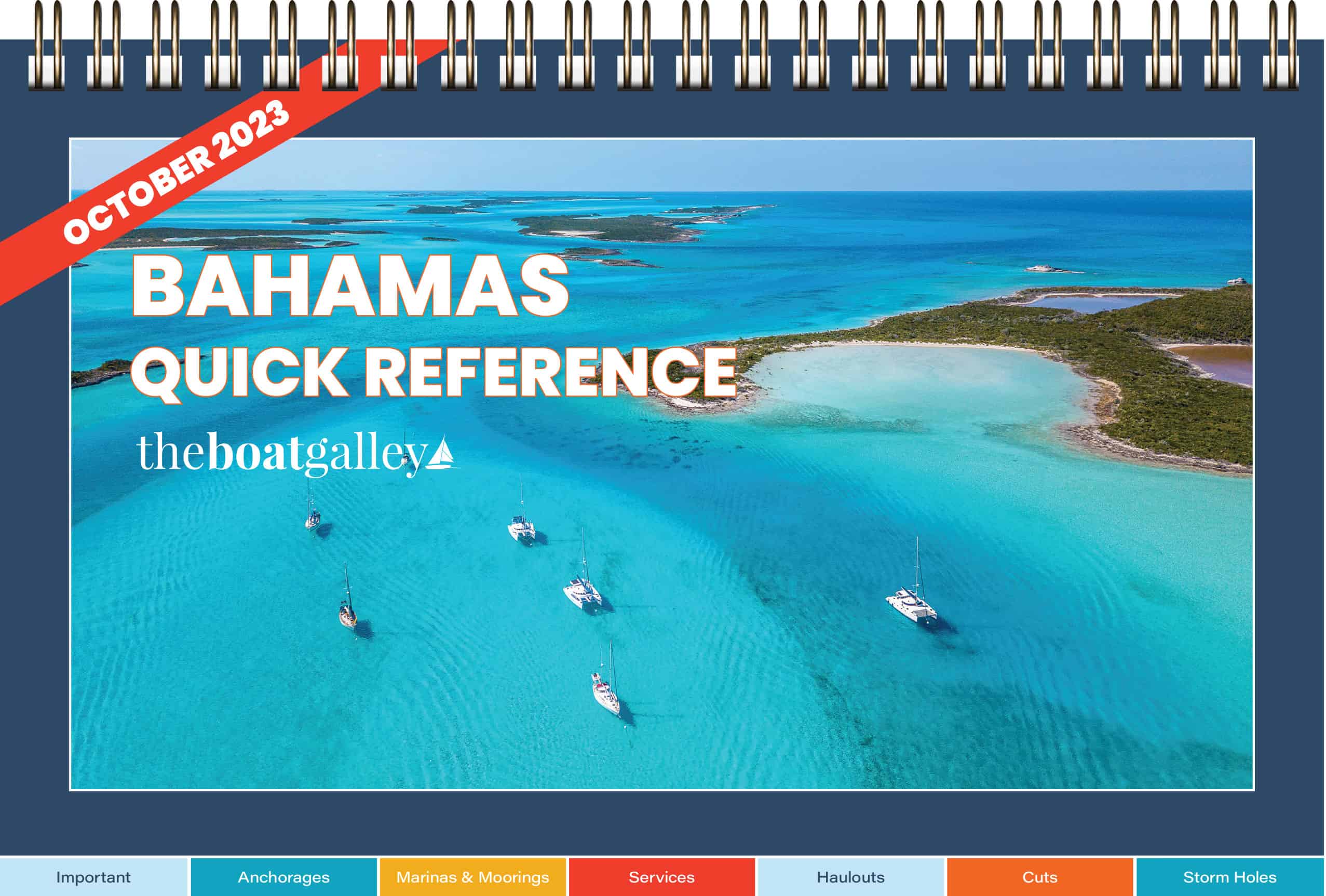

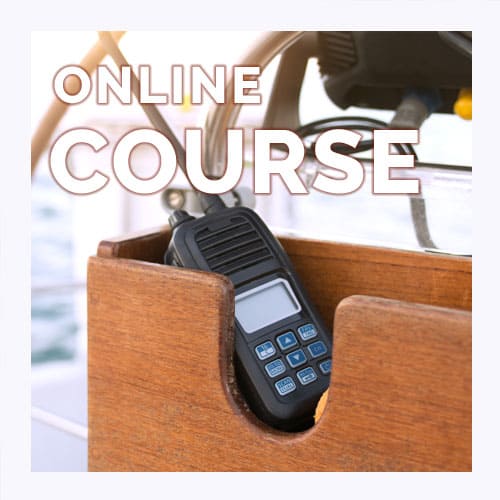
Anne Marie Nielson says
I bought it for my husbands birthday before we bought our cruising boat. A very big hint of what was to come..
Bill Dixon says
I met him once at the Miami boat show. Called him Mr. Calder. He said that was his father.
Robert Patterson says
It depends on if you are on a first name or last name basis. That translates to if you have read and used him or you will in the near future.
Mark and Cindy - s/v Cream Puff says
Calder sits on the shelf right next to The Boat Galley. Though, The Boat Galley is way more fun to read 🙂
Mark and Cindy
s/v Cream Puff
http://www.creampuff.us
Jim Shell says
Both Nigel Calder and Don Casey have excellent texts for boaters. I also recommend Calder’s “Cruising Handbook” for those in more of a planning stage.
Mike Robinson says
I like using both Calder and Casey. Calder is like taking a college level class where Casey simplifies the description so that I get the picture. I am an amateur and appreciate the explanation that even I can understand. I did a major refit: everything from rigging to rewiring and relied on both books. Another valuable reference is Don Casey This Old Boat
Carolyn Shearlock says
Great description of the difference between the two!
Gladys Strickland says
Thank you so much, both for the post and the comments! As a new boat owner, I bought a copy of Calder’s 2nd edition at a used book store. Have referenced it often, but much of it is still over my head (for now). I keep telling people I need a “beginner’s guide” to explain the basics for all these unfamiliar systems, so I am ordering Casey TODAY. Will upgrade to Calder’s 3rd edition a bit later.
Carolyn Shearlock says
I think Casey will really “fit” where you are. I know that many times I read his info before diving into Calder — I needed the detail that Calder gave me, but I just didn’t understand it without the basics as taught by Casey.
Rachel Roy Smith says
this was our boating bible, a must for every boat owner!
Ellen Dawson says
Indispensable aboard our boat, too.
We also like Don Casey’s Boat Maintenance Manual.
The Boat Galley says
That’s our other go-to.
Maggie Tregembo Ricker says
Lorana, I wonder if S&C have this.
Steven Ricker says
I got a copy for Christmas.
Alex Todd says
What else is in your on board reference collection? Which do you keep electronically and which as books?
Carolyn Shearlock says
In addition to this one, we have the following print books (links are to Amazon):
Don Casey – Sailboat Maintenance Manual
Evridge – Practical Boat Mechanics
Sherman – Outboard Engines
LaVigne – Where There Is No Pet Doctor
Where There Is No Doctor
Mariner’s Weather
Jarman – Essential Knot Book
365 Starry Nights
Fish Guide — I love Paul Humann’s books and we carry the appropriate one for our location.
My favorite cookbook 🙂
Chris Parker’s Coastal and Offshore Weather — available on his web site, not Amazon
We also have several cruising guides for whatever area we’re in.
We have hard copies of owner’s manuals for every system and we have many parts lists and backup copies of owners manuals electronically. We have shop manuals for our outboard and diesel electronically.
Paul says
What’s the latest edition in hard copy? Lots of listing on Amazon, eBay, and Barnes and Nobel (where I have a credit I’d like to use)
Thanks in advance
Carolyn Shearlock says
Fourth edition. These links will take you straight to it (and put a few cents in The Boat Galley’s tip jar at no extra cost to you): Amazon http://amzn.to/2q9z4jh Barnes & Noble
Alex Todd says
There’s a 2017 edition. http://amzn.to/2Ca7Z68
It’s amazing, Calder used to update the book every 10 years or so. Now it seems he’s doing it every 3-5 years. Not sure what the new content is, though.
Paul says
Alex,
I’m gonna hope that there weren’t a lot of changes between the 2015 edition (which B&N carries) and the 2017 one listed on Amazon. Seems a very short ‘turn around’ even with today’s modern electronics.
Paul says
Thanks Carolyn …. I had a gift card for B&N so it made it a very easy choice.
Paul says
My copy arrived yesterday – no one warned me I might need a fork lift to carry it in from the mail box – almost 5 lbs 🙂
I’ve only had a quick look and skimmed through some sections on equipment that I think I understand fairly well – this is really a fantastic reference and I know it will more than pay for itself in just a few repairs.
Carolyn Shearlock says
You definitely get your money’s worth!